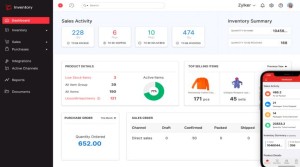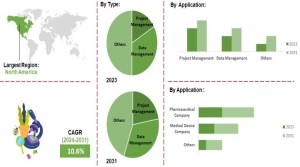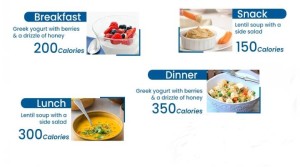How to Convert Your Side Hustle Passion into Main Income?
Before making any drastic moves, evaluating whether your side hustle can realistically support your full-time is essential.
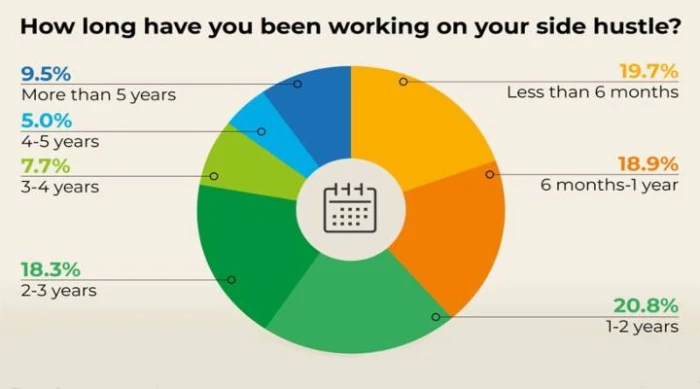
Many people start side hustles to explore their passions or earn extra income outside their primary job. But for those who are deeply committed, turning that side hustle into a full-time gig can be both exciting and daunting. Transitioning from a part-time passion to a primary source of income involves careful planning, financial considerations, and strategic decision-making. In this article, we’ll explore the steps and calculations involved in successfully making this shift.
1. Evaluate Your Passion and Its Marketability
Before making any drastic moves, evaluating whether your side hustle can realistically support your full-time is essential. Start by asking yourself these key questions.
- Is there a demand for my product or service?
- Can I differentiate myself from my competitors?
- Will I still enjoy this passion if it becomes my primary job?
A clear-eyed understanding of your market and your passion’s potential will help you avoid burnout and unrealistic expectations. Research your niche’s competition, customer base, and trends to see whether there’s room for growth. This evaluation will be foundational as you begin to think about income targets.
2. Assess Current Income from the Side Hustle
To transit a side hustle into your primary income, you must calculate how much it generates and can grow. Start by reviewing the following.
- Monthly revenue.
- Average sales or services provided.
- Expenses associated with running the hustle (supplies, marketing, etc.).
For instance, if your side hustles brings in $1000 per month and costs $300 in expenses, your net income is $700. But this is still part-time income, so your next step will be to forecast what your hustle might generate if you give it your full-time attention.
3. Calculate Your Personal Financial Needs
The critical calculation in turning a side hustle into your primary income is determining how much you need to live on. This includes the following.
- Rent or mortgage.
- Utilities.
- Groceries and other essentials.
- Healthcare and insurance.
- Debt repayments (student loans, credit cards).
- Savings and retirement contributions.
Make a list of all the money you spend monthly and yearly. This list should show everything you pay for like food, rent, and bills. If your current job covers these, you must ensure your side hustle can too. For example, if your total living expenses amount to $3500 a month, that’s your target budget.
4. Plan for Business Growth
If your side hustle isn’t generating enough income to cover your living expenses, that doesn’t mean that it can’t. The question is how much you’ll need to scale up and how quickly. Consider the following steps.
- Increase the Prices
As a full-time business owner, you can dedicate more time to improve your offerings. This could justify charging higher prices, but you must consider whether your consumers will pay.
- Expand Customer Base
Consider thinking that whether you can reach more people by improving your marketing or expanding into new regions?
- Increase Sales Volume
If you have a product-based business, think about that whether you can produce and sell more items? For service-based companies, can you take on more clients?
Once you know how to grow, create a detailed plan to reach your income goals. For example, if you need to make $3500 a month and your current net income is $700, you’ll need to quintuple your sales or services, raise your prices, or reduce expenses to make it work.
5. Consider the Costs of Going Full-Time
Turning your side hustle into a full-time business often comes with extra expenses.
- Health Insurance
If you leave a job with benefits, you’ll likely have to pay for private health insurance which can be costly.
- Taxes
If you work for yourself, you must pay taxes on your income. These taxes are like the ones you pay when you have a regular job but you have to pay both parts instead of just the employee part.
- Retirement Savings
Without employer-sponsored retirement plans like a 401(k), you’ll need to set aside money for retirement on your own.
- Business Expenses
As your business grows, you might need to invest more in marketing, equipment, or employees to keep up with demand.
Factor these new expenses into your financial projections. For instance, if you currently receive health insurance through your employer and will lose that benefit, you might need to budget an additional $300 to $500 per month for health coverage.
6. Build an Emergency Fund
Managing income fluctuations is one of the biggest challenges of transitioning to full-time entrepreneurship. Your side hustle might have consistent demand now, but that could change when it becomes your sole focus. To protect yourself, you’ll need an emergency fund.
Financial experts generally recommend saving up to three to six months of living expenses before leaping. This cushion will give you peace of mind as you navigate the ups and downs of running your business.
7. Gradually Make the Transition
Don’t quit your day job, instead, build your side hustle incrementally while still working your primary job. This will let you try it out, get more customers, and ensure you’re making enough money before you depend on it entirely. Once you see steady and sustainable growth, you can gradually reduce hours at your day job or move to freelance part-time before making the final leap.
In this guide, we’ll explore how to convert your passion into a sustainable business successfully, the importance of choosing profitable side hustle ideas and the essential calculations necessary to set realistic income goals.
Process of Turning Passion into Income
The foundation of a successful side hustle often stems from a passion or skill that you already love. However, turning that passion into a source of income requires understanding how to market it, whether it’s through selling products, offering services, or creating revenue-generating content. The key is tapping into a niche that aligns with your passion and market demand.
To begin properly, ask yourself following questions.
- What are you passionate about?
- Is there a market demand for this product, service, or expertise?
- How can you package your passion in a way that adds value to others?
For example, if your passion is baking, you can start by selling baked goods online or offering custom-made cakes for events. If your interest lies in fitness, consider starting a personal training business or offering online coaching. The trick is to understand that how your passion can be monetized, then start small to test the waters.
Best Profitable Side Hustles
While passion is crucial, profitability is equally essential if you plan to turn your side hustle into a full-time business. Not all passions have the potential to be profitable, so it’s necessary to evaluate the financial feasibility of your idea. A profitable side hustle should not only align with your skills and interests but also meet a need in the market. Ideally, it should be scalable and allowing future growth without requiring endless work hours. Below are given some examples of side hustles that you can consider.
- Freelancing
Writing, graphic design, web development, and digital marketing are freelance work that can become lucrative businesses.
- E-commerce
Selling products on platforms like Etsy, Amazon, or through your own website can provide a steady stream of income, mainly if you focus on unique and in-demand products.
- Online Courses and Coaching
If you have expertise in a specific field, you can create classes or offer one-on-one coaching which can be highly profitable with the right audience.
- Content Creation
Blogging, YouTube channels, podcasting, and social media influencing can be profitable side hustles once you gain a loyal following and monetize through ads, sponsorships, and affiliate marketing.
Profitable Side Hustle Ideas to Consider
To give you some practical inspiration, here are a few ideas for side hustles that can turn into full-time income.
- Freelance Writing or Copywriting
Companies always look for good content writers and copywriters. As you build a portfolio, you can increase your rates and grow your client base.
- Virtual Assistant Services
Offering administrative, social media management, or customer support services remotely can be a great way to build an income stream.
- Drop shipping
Drop shipping is a good way to start an online store without spending a lot of money. You can sell things without needing to own them first. This means you don’t have to store them in your own place or send them to people yourself. This makes it a popular choice for people who want to start their own online store.
- Tutoring or Online Teaching
If you have expertise in a subject then tutoring or offering online classes can be rewarding and profitable.
- Handmade Crafts or Art
Platforms like Etsy have made it easier than ever to turn your craft into a full-time business. Customizable and niche products do exceptionally well with providing sales. The key to side hustle success is finding something that not only brings in money but also fits your lifestyle and skill set. You don’t want to rust out while trying to juggle a side hustle that you don’t enjoy.
Side Hustle Success – What it Takes?
Building a successful side hustle takes commitment, time management, and persistence. It’s not enough to have a good idea, rather you need to develop the discipline to work on it consistently, even when you’re tired from your primary job. To ensure side hustle success, you should consider the following steps.
- Set Clear Goals
What do you want to achieve with your side hustle? Are you aiming to make an extra $500 monthly? Or do you want to replace your full-time income?
- Create a Schedule
Time management is critical, dedicate specific weekly hours to work on your side hustle and stick to that schedule.
- Do Networking and Promote Yourself
Networking is essential for growth, especially if you are a freelancer or running a service-based business. Use social media, attend industry events, and engage in online communities to build connections.
- Track Your Progress
Monitor your income, expenses, and overall growth to see what’s working and where improvements are needed.
Income Goal Calculations
A crucial aspect of converting your side hustle into a full-time income is to calculate that how much money you need to make. To do this, start by figuring out your monthly financial needs. You can consider the following things to get started properly.
- Living Expenses
Estimate living expenses such as rent, utilities, groceries, transportation etc.
- Business Expenses
Also estimate about business expenses such as website hosting, marketing, tools, and supplies.
- Savings and Emergency Fund
It’s wise approach to account for some savings or an emergency fund especially when transitioning from a stable paycheck.
For example, if your monthly living expenses are $3000 in total, you’ll need to generate at least this much from your side hustle to replace your primary income. If your side hustle nets $1000 a month, you need to increase your rates, take on more clients, or expand your offerings to reach your income goal. By breaking down your financial needs and calculating your desired monthly income, you can set realistic targets for your side hustle. Remember to consider taxes, savings, and reinvestment into your business when planning your finances.
Turning a side hustle into your primary source of income is both a financial and emotional journey. It requires a deep understanding of your business, clear financial goals, and a strategic plan to scale. You can change your hobby into a job by being smart with your money, thinking about how to grow, and taking small steps. With patience and persistence, your side hustle can evolve into your primary income, allowing you to live a more fulfilling and self-directed life.
Use the 401(k) Calculator to quickly determine how much you’ll need for retirement. You can plan for a comfortable retirement, maximize contributions, and forecast future savings with the help of this calculator.
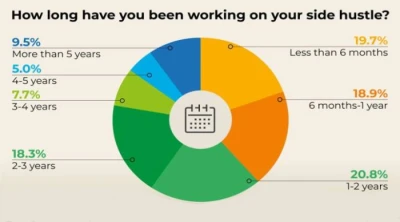
Many people start side hustles to explore their passions or earn extra income outside their primary job. But for those who are deeply committed, turning that side hustle into a full-time gig can be both exciting and daunting. Transitioning from a part-time passion to a primary source of income involves careful planning, financial considerations, and strategic decision-making. In this article, we’ll explore the steps and calculations involved in successfully making this shift.
1. Evaluate Your Passion and Its Marketability
Before making any drastic moves, evaluating whether your side hustle can realistically support your full-time is essential. Start by asking yourself these key questions.
- Is there a demand for my product or service?
- Can I differentiate myself from my competitors?
- Will I still enjoy this passion if it becomes my primary job?
A clear-eyed understanding of your market and your passion’s potential will help you avoid burnout and unrealistic expectations. Research your niche’s competition, customer base, and trends to see whether there’s room for growth. This evaluation will be foundational as you begin to think about income targets.
2. Assess Current Income from the Side Hustle
To transit a side hustle into your primary income, you must calculate how much it generates and can grow. Start by reviewing the following.
- Monthly revenue.
- Average sales or services provided.
- Expenses associated with running the hustle (supplies, marketing, etc.).
For instance, if your side hustles brings in $1000 per month and costs $300 in expenses, your net income is $700. But this is still part-time income, so your next step will be to forecast what your hustle might generate if you give it your full-time attention.
3. Calculate Your Personal Financial Needs
The critical calculation in turning a side hustle into your primary income is determining how much you need to live on. This includes the following.
- Rent or mortgage.
- Utilities.
- Groceries and other essentials.
- Healthcare and insurance.
- Debt repayments (student loans, credit cards).
- Savings and retirement contributions.
Make a list of all the money you spend monthly and yearly. This list should show everything you pay for like food, rent, and bills. If your current job covers these, you must ensure your side hustle can too. For example, if your total living expenses amount to $3500 a month, that’s your target budget.
4. Plan for Business Growth
If your side hustle isn’t generating enough income to cover your living expenses, that doesn’t mean that it can’t. The question is how much you’ll need to scale up and how quickly. Consider the following steps.
- Increase the Prices
As a full-time business owner, you can dedicate more time to improve your offerings. This could justify charging higher prices, but you must consider whether your consumers will pay.
- Expand Customer Base
Consider thinking that whether you can reach more people by improving your marketing or expanding into new regions?
- Increase Sales Volume
If you have a product-based business, think about that whether you can produce and sell more items? For service-based companies, can you take on more clients?
Once you know how to grow, create a detailed plan to reach your income goals. For example, if you need to make $3500 a month and your current net income is $700, you’ll need to quintuple your sales or services, raise your prices, or reduce expenses to make it work.
5. Consider the Costs of Going Full-Time
Turning your side hustle into a full-time business often comes with extra expenses.
- Health Insurance
If you leave a job with benefits, you’ll likely have to pay for private health insurance which can be costly.
- Taxes
If you work for yourself, you must pay taxes on your income. These taxes are like the ones you pay when you have a regular job but you have to pay both parts instead of just the employee part.
- Retirement Savings
Without employer-sponsored retirement plans like a 401(k), you’ll need to set aside money for retirement on your own.
- Business Expenses
As your business grows, you might need to invest more in marketing, equipment, or employees to keep up with demand.
Factor these new expenses into your financial projections. For instance, if you currently receive health insurance through your employer and will lose that benefit, you might need to budget an additional $300 to $500 per month for health coverage.
6. Build an Emergency Fund
Managing income fluctuations is one of the biggest challenges of transitioning to full-time entrepreneurship. Your side hustle might have consistent demand now, but that could change when it becomes your sole focus. To protect yourself, you’ll need an emergency fund.
Financial experts generally recommend saving up to three to six months of living expenses before leaping. This cushion will give you peace of mind as you navigate the ups and downs of running your business.
7. Gradually Make the Transition
Don’t quit your day job, instead, build your side hustle incrementally while still working your primary job. This will let you try it out, get more customers, and ensure you’re making enough money before you depend on it entirely. Once you see steady and sustainable growth, you can gradually reduce hours at your day job or move to freelance part-time before making the final leap.
In this guide, we’ll explore how to convert your passion into a sustainable business successfully, the importance of choosing profitable side hustle ideas and the essential calculations necessary to set realistic income goals.
Process of Turning Passion into Income
The foundation of a successful side hustle often stems from a passion or skill that you already love. However, turning that passion into a source of income requires understanding how to market it, whether it’s through selling products, offering services, or creating revenue-generating content. The key is tapping into a niche that aligns with your passion and market demand.
To begin properly, ask yourself following questions.
- What are you passionate about?
- Is there a market demand for this product, service, or expertise?
- How can you package your passion in a way that adds value to others?
For example, if your passion is baking, you can start by selling baked goods online or offering custom-made cakes for events. If your interest lies in fitness, consider starting a personal training business or offering online coaching. The trick is to understand that how your passion can be monetized, then start small to test the waters.
Best Profitable Side Hustles
While passion is crucial, profitability is equally essential if you plan to turn your side hustle into a full-time business. Not all passions have the potential to be profitable, so it’s necessary to evaluate the financial feasibility of your idea. A profitable side hustle should not only align with your skills and interests but also meet a need in the market. Ideally, it should be scalable and allowing future growth without requiring endless work hours. Below are given some examples of side hustles that you can consider.
- Freelancing
Writing, graphic design, web development, and digital marketing are freelance work that can become lucrative businesses.
- E-commerce
Selling products on platforms like Etsy, Amazon, or through your own website can provide a steady stream of income, mainly if you focus on unique and in-demand products.
- Online Courses and Coaching
If you have expertise in a specific field, you can create classes or offer one-on-one coaching which can be highly profitable with the right audience.
- Content Creation
Blogging, YouTube channels, podcasting, and social media influencing can be profitable side hustles once you gain a loyal following and monetize through ads, sponsorships, and affiliate marketing.
Profitable Side Hustle Ideas to Consider
To give you some practical inspiration, here are a few ideas for side hustles that can turn into full-time income.
- Freelance Writing or Copywriting
Companies always look for good content writers and copywriters. As you build a portfolio, you can increase your rates and grow your client base.
- Virtual Assistant Services
Offering administrative, social media management, or customer support services remotely can be a great way to build an income stream.
- Drop shipping
Drop shipping is a good way to start an online store without spending a lot of money. You can sell things without needing to own them first. This means you don’t have to store them in your own place or send them to people yourself. This makes it a popular choice for people who want to start their own online store.
- Tutoring or Online Teaching
If you have expertise in a subject then tutoring or offering online classes can be rewarding and profitable.
- Handmade Crafts or Art
Platforms like Etsy have made it easier than ever to turn your craft into a full-time business. Customizable and niche products do exceptionally well with providing sales. The key to side hustle success is finding something that not only brings in money but also fits your lifestyle and skill set. You don’t want to rust out while trying to juggle a side hustle that you don’t enjoy.
Side Hustle Success – What it Takes?
Building a successful side hustle takes commitment, time management, and persistence. It’s not enough to have a good idea, rather you need to develop the discipline to work on it consistently, even when you’re tired from your primary job. To ensure side hustle success, you should consider the following steps.
- Set Clear Goals
What do you want to achieve with your side hustle? Are you aiming to make an extra $500 monthly? Or do you want to replace your full-time income?
- Create a Schedule
Time management is critical, dedicate specific weekly hours to work on your side hustle and stick to that schedule.
- Do Networking and Promote Yourself
Networking is essential for growth, especially if you are a freelancer or running a service-based business. Use social media, attend industry events, and engage in online communities to build connections.
- Track Your Progress
Monitor your income, expenses, and overall growth to see what’s working and where improvements are needed.
Income Goal Calculations
A crucial aspect of converting your side hustle into a full-time income is to calculate that how much money you need to make. To do this, start by figuring out your monthly financial needs. You can consider the following things to get started properly.
- Living Expenses
Estimate living expenses such as rent, utilities, groceries, transportation etc.
- Business Expenses
Also estimate about business expenses such as website hosting, marketing, tools, and supplies.
- Savings and Emergency Fund
It’s wise approach to account for some savings or an emergency fund especially when transitioning from a stable paycheck.
For example, if your monthly living expenses are $3000 in total, you’ll need to generate at least this much from your side hustle to replace your primary income. If your side hustle nets $1000 a month, you need to increase your rates, take on more clients, or expand your offerings to reach your income goal. By breaking down your financial needs and calculating your desired monthly income, you can set realistic targets for your side hustle. Remember to consider taxes, savings, and reinvestment into your business when planning your finances.
Turning a side hustle into your primary source of income is both a financial and emotional journey. It requires a deep understanding of your business, clear financial goals, and a strategic plan to scale. You can change your hobby into a job by being smart with your money, thinking about how to grow, and taking small steps. With patience and persistence, your side hustle can evolve into your primary income, allowing you to live a more fulfilling and self-directed life.
Use the 401(k) Calculator to quickly determine how much you’ll need for retirement. You can plan for a comfortable retirement, maximize contributions, and forecast future savings with the help of this calculator.
Conversation
Latest Blogs
© Blog CoolCalculator, Explore CoolCalculator, your destination for the latest insights, tips, and updates on the world of online calculators. Stay informed and make your calculations smarter with our blog. ,
Designed
by Saad Media Team , Team Lead M.Rizwan Akhtar




